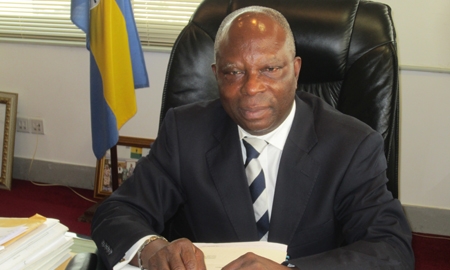Located on the Gulf of Guinea, the ports of Tema and Takoradi bustle with activity. In recent years, they have seen significant increases in the volumes of cargo they handle, and they are on course to become even busier in the future.
Ghana Ports & Harbours Authority (GPHA) has launched multi-million dollar expansion projects for each of the two deepwater harbours, while the government is offering new incentives to encourage shippers to take their business there.
Around 90 per cent of Ghana’s foreign trade involves transportation by sea, so Tema and Takoradi already play a vital role in the economy. They are also are central to Ghana’s attempt to position itself as the ideal base for international trade and investment in the West African sub-region. The aim is to turn them into the regional transhipment and transit ports of choice: Tema as a regional container hub, and Takoradi as a regional oil and gas services hub.
This expansion of the two ports is timely. World trade is expected to double over the next 15 years and trade with African countries is increasing. Meanwhile, shipping lines are investing in newer and bigger vessels.
Against this background, Nestor Percy Galley, Director-General of the Ports & Harbours Authority, is confident that Tema and Takoradi can become the favoured hubs for maritime transportation.
“We have the hardware and the personnel to deliver the services,” he says. “If we expand our equipment and facilities a bit further, we will have no problems meeting the competition in the Southern region.”
“We have the hardware and the personnel to deliver the services. If we expand our equipment and facilities a bit further, we will have no problems meeting the competition in the Southern region.”
Nestor Percy Galley, Director-General of the Ports & Harbours Authority |
Both Tema and Takoradi ports are wholly owned by the Ghanaian government, but it is the GPHA that is responsible for overseeing all port planning, development, management and operations, and it is expected to run the harbours on a commercial basis.
Ghana’s total maritime trade for 2010 amounted to 13.9 million metric tons, according to Ghana Shippers Authority – an increase of 16 per cent compared to 2009. Imports made up around 10.6 million metric tons, while exports were 3.3 million metric tons.
Approximately 80 per cent of Ghana’s international cargo passes through the Port of Tema, which the GPHA plans to spend up to $700 million expanding and upgrading.
This year marks exactly half a century since what was once a small fishing village in southeastern Ghana, 30 miles from Accra, became the largest man-made harbour in Africa. To the people who live in the industrial centre that exists there today, Tema is known simply as “Harbour City”.
The larger of the two seaports, it covers almost 4 million square metres and handles products ranging from crude oil and petroleum products to cement, iron and steel, aluminium and textiles. It also handles containers for both domestic trade and transit markets of the landlocked Sahelian countries to the north.
Tema has 12 deepwater berths and two quays, with a total paved quay apron of 2,196 metres. Quay 2 boasts a dedicated container terminal that has been ranked by the by Maersk Line as one of the most productive in the continent. Around 77,200 square metres is available for open storage, and there is a closed storage area of around 25,000 square metres, consisting of six sheds with room to store 50,000 tons of cargo.
The Port of Takoradi, which lies in the western part of Ghana, has a far longer history, having been established in 1928. Visited by more than 600 vessels a year, its 1,400 metres of quayside is used mostly for handling exports, including commodities such as cocoa, manganese and bauxite ores.
However, with recent oil finds off the coast of southern Ghana there is to be a change of emphasis. The port will continue and indeed expand its present cargo-handling activities, but the GPHA is also eager for it to serve the oil and gas industry.
“If we expand our capacity, we will be prepared to handle the increasing flow of traffic these oil exploration activities are bound to bring,” says Mr Galley.
Phase one of the $500 million expansion plan is due to be finished this year, with completion of the second phase in 2014. This will provide Takoradi with an oil service terminal and supply base, bulk cargo terminals for exporting manganese and bauxite and for imports like clinker, quick lime and wheat. Also included are general cargo terminals with storage sheds for break bulk cargo, open storage areas, container terminals and a passenger terminal for cruise ships.
Upgrading Tema and Takoradi ports is part of Ghana’s move towards creating an integrated transportation system. This also includes linking Tema Port to Lake Volta, by rail to transport cargo to Akosombo and by ferries to roads in the northern region. A further project by the GPHA and Ghana Shippers Authority to develop the Boankra Inland Port is aimed at decongesting the ports and reducing the transit time of goods to the northern sector.
Mr Galley says: “Once we integrate our transportation system, we can connect to the different parts of the country and the region easily. By getting all these things in place, we can become a veritable hub for the region, and win the respect of our neighbours and the international community.”

0 COMMENTS